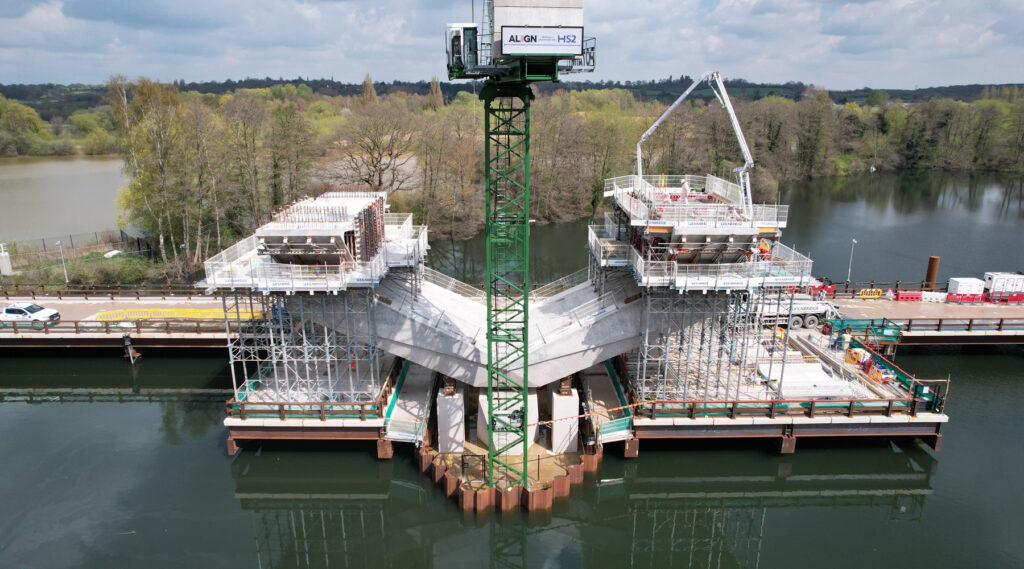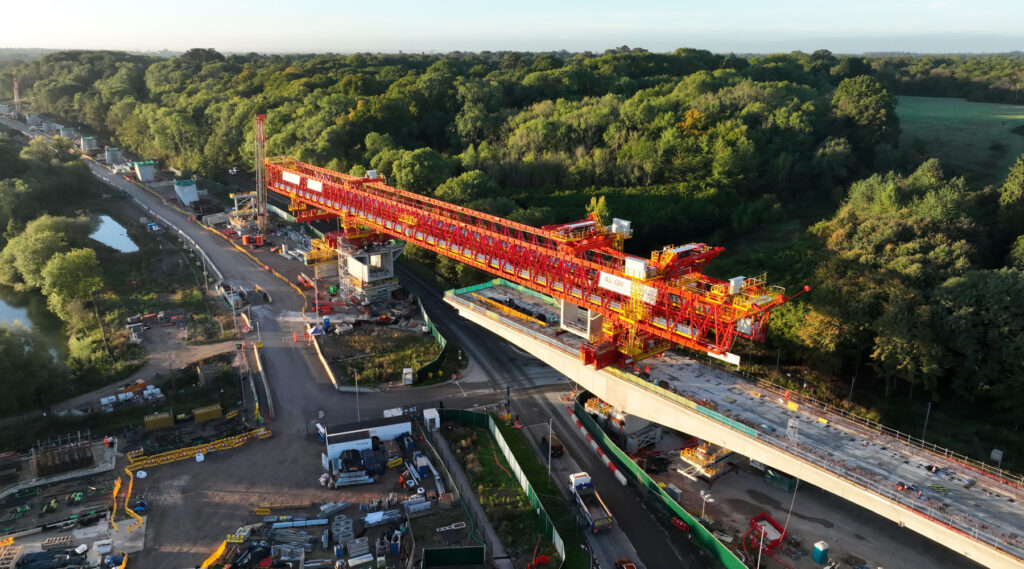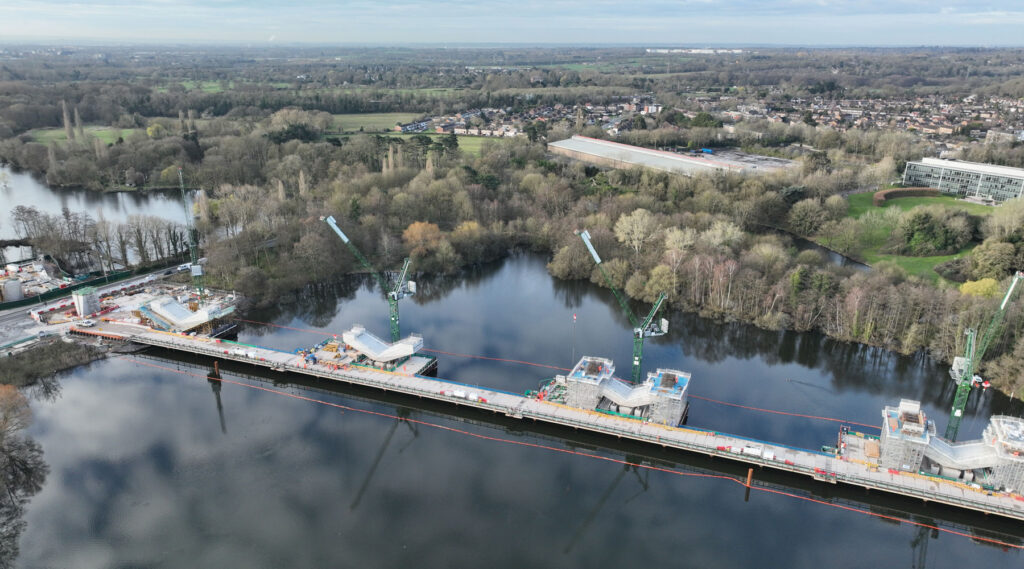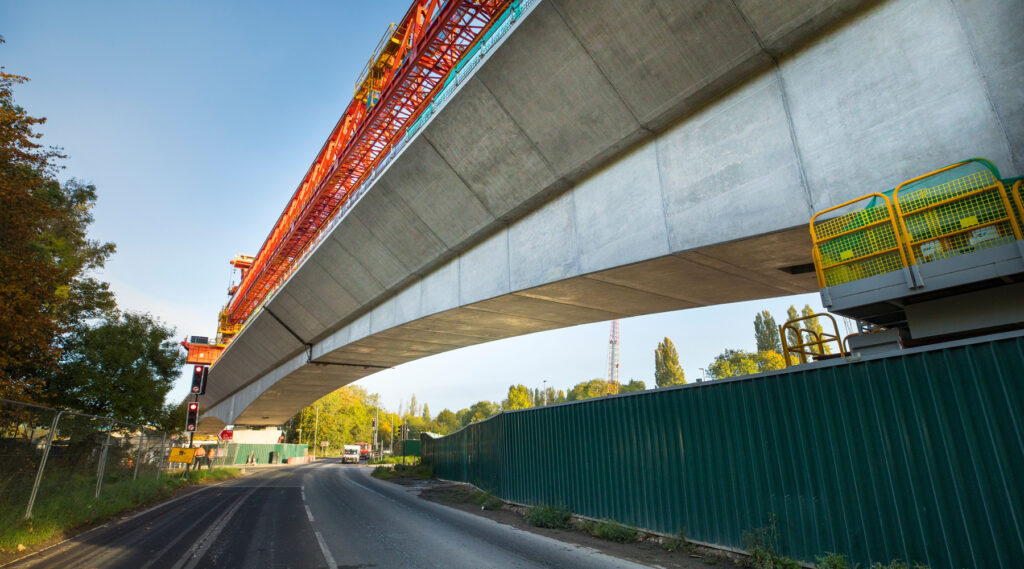New photos of the V-shaped piers that will carry the HS2 railway over the Colne Valley in west London have been released, showing how the railway’s longest viaduct will span the lakes. Construction of the viaduct started a year ago, with deep piles sent into the former gravel pits that now form the lakes.
For the past year, a 700-tonne ‘launch girder’ – the only one of its kind in the UK – has been assembling giant pre-cast concrete segments to form the first 1 km of the viaduct deck along the edge of the valley. The 160m long bridge-building machine is used to lift the giant concrete deck segments that form the viaduct’s arches into position. Once each section is complete, the machine inches itself forward to build the next stage.
In the last year, it has installed over 300 out of 1,000 segments required to complete the viaduct deck, installing up to three pairs of segments each day
Now the first enormous v-shaped piers have been completed in the lake, to allow the viaduct to curve eastward, over the water. The ‘V piers’ – each weighing in at 1,800 tonnes – will support a row of arches that are said to have been inspired by the flight of a stone skimming over the surface of the water.
To allow for the gentle curve of the viaduct, each of the one thousand segments that form the arches and deck are slightly different – and all are manufactured at a temporary factory set up close by, with direct access to the M25.
Designed to bear the weight of the 80m wide arches over the lakes, the ‘v-piers’ are twice as large as simpler piers that carry the viaduct over land.
Cast in place using a series of giant moulds, each pier has a separate tower crane, with a temporary access bridge linking them with the main construction site. Cofferdams were used to hold back the water while the 60m deep foundations were built into the bed of the lakes.
Each pier weighs around 1,800 tonnes and took nine months to complete. To help the engineers master the complex shape of the pier, a mock-up was built off site before work began on the real piers. In total, 11 ‘v-piers’ will support the viaduct over water with a further 45 piers on land.
Once the piers are ready, deck segments will be placed alternately on each side, using a cantilever approach to balance the structure, as two half-arches are constructed simultaneously. Steel tensioning cables are then threaded through the segments to strengthen the bridge.
The Colne Valley Viaduct – which is being built near Hillingdon – will carry high speed trains more than two miles (3.4km) across the Grand Union Canal, River Colne, local roads and a series of lakes between the end of the London tunnels and the start of the Chiltern tunnels.











Love a good bit of civil engineering!
So why have they built them like this? Use less concrete? Take more wight? Or merely just to look fancy and spend money doing extra designs?
Less pillars in the water is more natural I would assume